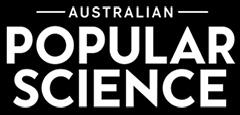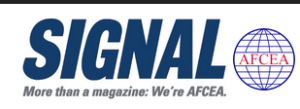LAB REPORT
Science and Technology Making Headlines
Jan. 21, 2022


An artist’s conception of the cross section of a super-Earth with the NIF target chamber superimposed over the mantle, looking into the core. Image by John Jett/LLNL.
Iron to the core
The molten cores of larger rocky exoplanets should stay hot longer than those within small worlds, according to a LLNL study. That’s good news for interstellar explorers because a molten core is probably required for life to develop on a planet.
Determining this feature of exoplanets required an experiment with giant lasers and an incredibly thin sliver of iron placed under unprecedented pressure. “We’re finding so many planets, and (one of) the big questions people have are: are these planets potentially habitable?” said Rick Kraus, a physicist at Lawrence Livermore National Laboratory who led the study.
To answer this question, researchers don’t normally start with thinking about a planet’s core. Instead, they ask whether the planet is the right distance from its star or whether it has water. But Kraus and his team wanted to find other ways to discern whether a planet is habitable.
They explored a planet’s ability to form a magnetosphere — a magnetic field that protects it from solar radiation, like the one around Earth does for us — as a window into habitability, Kraus said. Life as we know it wouldn’t be possible without the Earth’s magnetic field.


LLNL researchers Nick Fischer and Amy Rasley are characterizing nanolipoprotein particle vaccine formulations using a dynamic light-scattering instrument. Detailed characterization of the nanoparticles provides an important quality control metric for vaccine development. Photo by Julie Russell/LLNL.
Defending troops against biothreats
Scientists from Lawrence Livermore and three other institutions are seeking to develop a multipathogen vaccine that will protect against three bacterial biothreat pathogens that cause plague, rabbit fever and melioidosis.
Led by the LLNL, the team includes disease experts from the University of New Mexico Health Sciences Center; the University of Nevada, Reno School of Medicine; and the U.S. Army Medical Research Institute of Infectious Diseases. The researchers, who will collaborate under a five-year, $10 million grant from the Defense Threat Reduction Agency, are aiming to develop a single vaccine that will protect against tularemia, melioidosis and plague.
LLNL scientists have demonstrated the ability of a subunit vaccine, incorporating different antigens from the Francisella tularensis bacterium into a single particle, to protect against inhalation of high doses of the bacteria, which causes the disease tularemia, also known as rabbit fever. Their collaborators at the University of Nevada and the Army Medical Research Institute of Infectious Diseases have been testing candidate subunit vaccines for melioidosis and plague respectively, and their data suggests that those subunit vaccines could be effective.


In the Multiscale Machine-Learned Modeling Infrastructure (MuMMI), the macroscale simulation runs a large system, with hundreds of proteins, at low resolution and machine learning decides which regions of the macro-model require investigation in a microscale simulation at much higher resolution. Graphic by Tim Carpenter/LLNL.
Modeling protein behavior
Lawrence Livermore researchers and a multi-institutional team of scientists have developed a highly detailed, machine learning-backed multiscale model revealing the importance of lipids to the signaling dynamics of RAS, a family of proteins whose mutations are linked to numerous cancers.
The research details the methodology behind the Multiscale Machine-Learned Modeling Infrastructure (MuMMI), which simulates the behavior of RAS proteins on a realistic cell membrane, their interactions with each other and with lipids — organic compounds that help make up cell membranes — and the activation of signaling through the RAS interaction with RAF proteins, on a macro and molecular level.
It also discusses the team's findings from using the framework to model how RAS binds to other proteins and how different kinds of lipids dictate how RAS collects and positions itself on the cell membrane. Evaluating tens of thousands of simulations, the team captured all previous protein interactions and many more RAS interfaces. The data indicates that lipids — rather than protein interfaces — govern both RAS orientation and accumulation of RAS proteins.


LLNL’s AI Innovation Incubator (AI3) will serve as the foundation for a cohesive view of AI for Applied Science, built upon LLNL’s “cognitive simulation” approach that combines state-of-the-art AI technologies with leading-edge high performance computing.
A bonding experience
Researchers at the LLNL have announced a new collaborative between artificial intelligence (AI) experts to progress automation for scientific and commercial applications.
The new AI Innovation Incubator’s goal is to create a bond between industry and lab/academic sectors through cognitive simulation. State of the art AI technologies can assist with problem solving in national security issues and applied science matters.
“AI is such a quickly evolving field that having these hubs as a vehicle to quickly plant the most important, most exciting new ideas from outside the Lab to inside — and vice versa – is vitally important,” noted Brian Spears, LLNL physicist and AI3 director.
LLNL has already teamed up with some big-name commercial companies like Google, IBM, Hewlett Packard and NVIDA for the incubator research. The project is expected to evolve over the next three years.


Richard Klein
Klein is a star
LLNL physicist Richard Klein has been selected as a 2022 fellow of the American Astronomical Society.
Klein, who was selected “for broad and influential contributions to computational astrophysics, for scientific achievements on radiatively-driven stellar winds and star formation theory and for training a generation of students and postdoctoral scholars,” is one of 23 members honored as fellows for 2022.
“I am thrilled to get this award designation as a new fellow from the American Astronomical Society,” Klein said. “I am deeply grateful to the many extraordinary collaborators including senior researchers, my graduate students and postdocs who I have worked with over the last several years both at LLNL and UC Berkeley.”
Klein serves as a senior physicist in the Weapon Physics and Design (WPD) division within the Weapons and Complex Integration Directorate at LLNL. He developed and led the initial code Verification and Validation (V&V) effort in the WPD division for several years at LLNL and also leads the development of the Uncertainty Quantification (UQ) Pipeline within the WPD division to perform UQ analysis of the main codes in WPD





